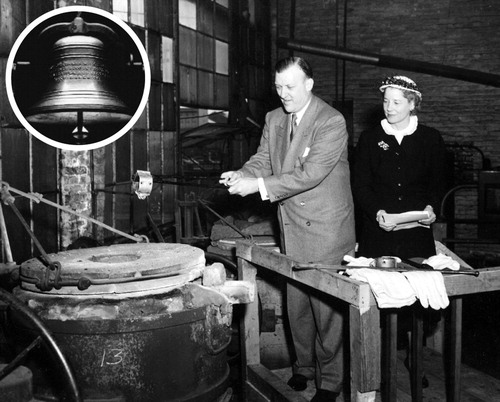MH Advocacy Group Celebrates Century of Achievement
Psychiatric treatment has come a long way during the past century—over the years, straitjackets and cold wraps have given way to psychotherapy and medications that address neurochemical problems in the brain and help people recover from mental illness.
At the turn of the 20th century, however, many people with mental illness suffered rather than thrived under the conditions that were then common in sanitariums.
One man's struggles to get help during this era led him to establish a committee that contributed to the enactment of important reforms in mental health treatment. That committee became what is today known as Mental Health America (MHA).
This year, MHA is celebrating its 100th anniversary and a century's worth of accomplishments.
The nonprofit advocacy organization, which is based in Alexandria, Va., has more than 300 affiliates worldwide and members who are consumers of mental health care, relatives of people with mental illness, psychiatrists, mental health professionals, policymakers, and researchers.
MHA founder and Yale graduate Clifford Beers began experiencing the symptoms of what became known as bipolar disorder after beginning work on Wall Street as a financier. One day, he attempted suicide by jumping out of a third-story window.
Beers survived but was seriously injured and spent the next three years in Connecticut psychiatric hospitals, where he was mistreated by staff. At one point during his hospitalization, according to MHA, he was placed in a straitjacket for 21 consecutive nights.
In Beers' 1908 autobiography, A Mind That Found Itself, he wrote about his experiences with mental illness treatment to heighten awareness of the struggles of those with similar illnesses.
A year later, he created the National Committee for Mental Hygiene, which was renamed the Mental Health Association in 1976, the National Mental Health Association in 1980, and Mental Health America in 2006.
In 1917 the committee drafted a mental hygiene program at the behest of the U.S. Surgeon General, and in the 1920s it developed a set of model commitment laws, which was adopted by several states.
In the 1930s the committee convened the First International Congress on Mental Hygiene in Washington, D.C. More than 3,000 people from all over the world attended.
In the decades that followed, the committee continued to play an active role in mental health advocacy. In 1946 it was one of the leading advocate organizations working for passage of the National Mental Health Act, which established the National Institute of Mental Health.

In 1953 it commissioned the casting of the Mental Health Bell, which was forged from melted chains and shackles used to restrain people with mental illness. The bell has served as the organization's symbol ever since.
MHA President and CEO David Shern, Ph.D., told Psychiatric News that the Mental Health Bell has long served as a “reminder that the invisible chains of misunderstanding and discrimination still bind people.”
He added that over the years, leaders in the mental health field have rung the bell to mark important achievements such as the passage of legislation to mandate insurance parity.
“It will continue to ring out in the future—for progress in improving mental health and achieving victory over mental illnesses and addiction disorders,” he stated.
Members of the National Committee for Mental Hygiene worked to enact various pieces of legislation, including the Community Mental Health Centers Act, which authorized construction grants for community mental health centers and pushed for deinstitutionalization.
In the ensuing decade, the committee forced the release of $52 million in impounded government funds meant to establish community mental health centers and demanded, successfully, that the question “Have you ever been mentally ill?” be removed from federal employment applications.
In the 1980s and 1990s under its new name, the National Mental Health Association, the organization continued to add to its list of achievements. Among these are
working to pass the Protection and Advocacy for Mentally Ill Individuals Act (1986), | |||||
organizing the National Action Commission on the Mental Health of Rural Americans (1987), and | |||||
helping to secure passage of the 1996 Mental Health Parity Act, the first federal legislation to implement some aspects of parity in health coverage for 9 million federal workers and their families. | |||||
In 2008 further progress was made on the parity front when MHA participated with a number of other advocacy and professional organizations—including APA—to ensure that the Paul Wellstone and Pete Domenici Mental Health Parity and Addiction Equity Act of 2008 became law.
“As we celebrate our centennial year,” Shern said,“ Mental Health America is determined to continue our work to make mental health integral to overall health and promote wellness, prevention, early intervention, education, and access to care for everyone who has a mental or substance use condition.”
More information about Mental Health America is posted at<www.nmha.org>.▪



